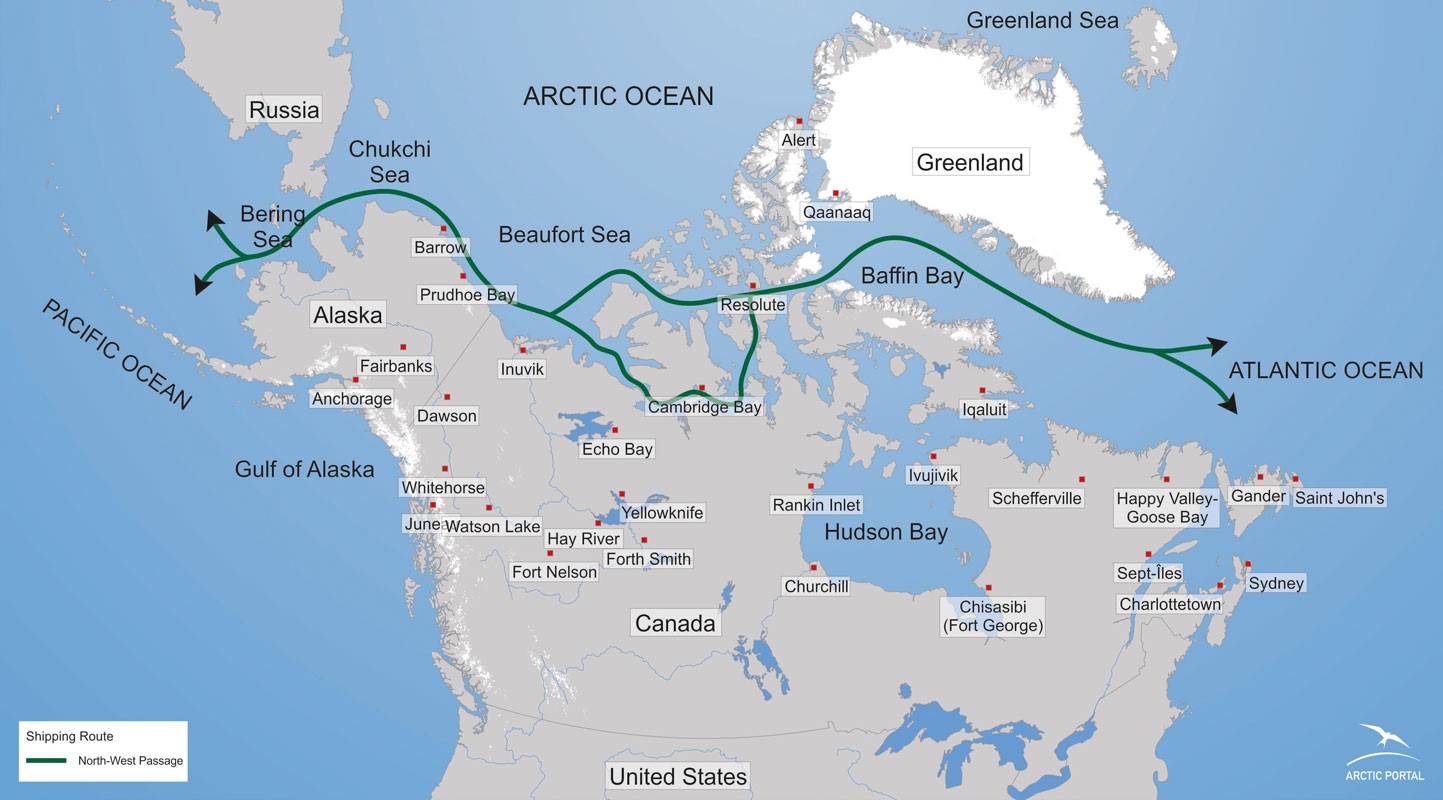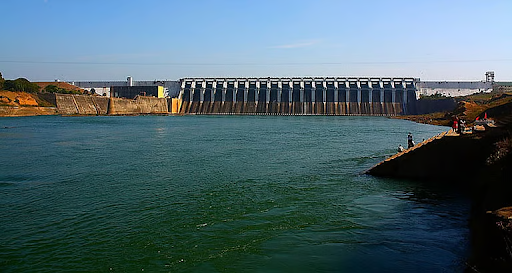Description

Disclaimer: Copyright infringement not intended.
Context:
An ice-free Northwest Passage has enabled the Gray Whale’s return to New England.
Details:
Northwest Passage
- The Northwest Passage (NWP) is the sea lane between the Atlantic and Pacific oceans through the Arctic Ocean, along the northern coast of North America via waterways through the Arctic Archipelago of Canada.
- Historically the Northwest Passage is known as Strait of Anian, which is a Spanish name for the passage that in 16th century was believed to connect the Pacific Ocean with the North Atlantic, which back then was the most desired shipping route of commerce.
Shipping activity
- The Passage represents a potentially attractive and valuable commercial shipping route if it were to become more accessible for navigation at a longer period of the year.
- In reality, it is a series of passages through straits of the Arctic Archipelago. It allows shipping from the North Atlantic Ocean, up Davis Strait between Canada and Greenland.
- The passage then continues through the Arctic Archipelago, to the Beaufort Sea over to Chukchi Sea and the Bering Strait into the North Pacific.
- Because of the many islands of the Arctic Archipelago, the potential shipping routes are in fact several each way. However some straits are more feasible than others due to the formation of the land under water.
Arguments on jurisdiction
- The question arises with regards to the Northwest Passage and delimitation of Beaufort Sea.
- By virtue of the historical title and state´s location on the landward side of the baselines drawn around the Arctic Archipelago in 1985, Canada claims Northwest Passage as its internal waters while the United States government argues the Northwest Passage to be an international strait as it connects to bodies that is Davis Strait and Baffin Bay and it is used for international traffic.
- The Canadian argument states that Northwest Passage has not been explored internationally while the US brings up the climate change issue, causing the opening of the Arctic waters and the future plan for the Passage to become one of the main Arctic international shipping routes.
- Currently, the Northwest Passage is being the shortest and most direct way for United States´ eastern regions to ship to Alaska.
- Both states decided to give them control over the Northwest Passage to monitor the route and ensure compliance with international legal standards for security and freedom of navigation.
- As with the Arctic itself, the status of the Northwest Passage was given limited attention until the latter part of the 20th century. The reason for that, as with other ice-covered areas of the Arctic, is that no particular interest was shown to utilize the route for transport and the conditions were thought to be dangerous. The tables have certainly turned.

Significance of the passage with relation to development in the Arctic region
- While oil and gas development in the Arctic is touched on, use of the Northwest Passage as a supply and service route to and from Asia is a big part of the future Arctic´s plan.
- New business opportunities, connected not only to the Arctic´s oil and gas resources but also the iron ore, diamonds, gold and fisheries, encourage investors from key business sectors to improve technology in order to develop better and more sufficient infrastructure in the northern hemisphere.
- Deepwater ports, road infrastructure, greater search and rescue presence and increased graduation rate among Inuit youth in order to increase the growth of northern workforce, are the key objectives for scientists and policy makers to be taken into account.
- Nowadays the Northwest Passage is seen as a revolutionary opening for large scale transportation by ships from the North Pacific to the North Atlantic Ocean.
- Despite the dispute between United States and Canada, Northwest Passage is seen as a global issue to affect trans-Arctic shipping operations of many countries. It is predicted that in near future, it will provide an impetus for international commercial usage.
Recent Developments
- The Gray Whale (Eschrichtius robustus) was last seen in the Atlantic Ocean in the 18th century. But now, it has appeared off the coast of the United States’ New England region.
- The gray whale, according to the Aquarium, is regularly found in the North Pacific Ocean.
- The New England sighting is the latest in a series of observations — there have been five in the last 15 years — of gray whales in the Atlantic and the Mediterranean.
Climate change to blame
- Human-induced global warming is responsible for the gray whale swimming in New England waters.
- The Pacific and Atlantic Oceans are connected through the Strait of Magellan and the Drake Passage at the southern end of South America.
- The human-constructed Panama Canal also connects the two bodies of water. But there is a third route between the two: the fabled Northwest Passage in the far north.
- The Northwest Passage, which connects the Atlantic and Pacific through the Arctic Ocean in Canada, has regularly been ice-free in the summertime in recent years, partly due to rising global temperatures.
- The extent of the sea ice typically limits the species range of gray whales, as the whales cannot break through the thick winter ice that usually blocks the Passage. Now, gray whales can potentially travel the Passage in the summer, something that wouldn’t have been possible in the previous century.
- These sightings of gray whales in the Atlantic serve as a reminder of how quickly marine species respond to climate change.

Gray whales
- Gray whales have a hump and a ridge of sharp bumps along their backs, instead of a dorsal fin.
- They are a type of baleen whale, which means they filter food from the water through special bristly structures in their mouths.
- Gray whales stay close to shore and feed in shallow water.
- Their well-known migrations take them between feeding and breeding areas, swimming as much as 12,000 miles round trip.
- Critically endangered western gray whales migrate into their summer feeding grounds near Sahkalin Island, Russia in late May or early June and return to their winter feeding grounds in the South China Sea in late autumn.
- Summer feeding grounds for the eastern population lie in the Bering and Chukchi Seas between Alaska and Russia.
- In the winter, these eastern gray whales migrate south along the west coast of the US to Mexico to breed and have their calves.
- The calm, warm waters of the lagoons are a safe place for young whales, free from predators like killer whales.
- Locals here affectionately call gray whales "friendly ones" as they have an unusual tendency to approach whale-watching boats and check out the occupants.
- IUCN status: Least Concern
- Scientific Name : Eschrichtius robustus
- Length: between 40 and 50 feet long
|
PRACTICE QUESION
The Bering Strait located between US and which of the following countries?
- Canada
- Spain
- Mexico
- Russia
Answer D
|











